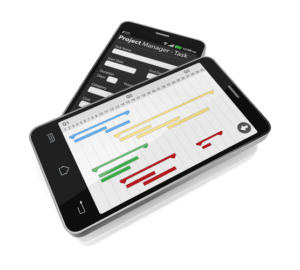
The opening balance is the first entry in the company’s accounts when it first begins trading and at the start of each new accounting period. Understanding opening balances is essential for businesses of all sizes and industries. It forms the backbone of accurate financial reporting and enables informed decision-making.
The opening balance sheet
- Firstly, it provides a clear snapshot of the financial health of the business at the start of the accounting period.
- Whether you want to grow internationally or focus on a specific market, everything is possible.
- Plus, you can export all that data to your accounting software in just a couple of clicks.
- All this frees you up to spend your time on what really matters, your business!
- This knowledge enables business owners to identify any discrepancies, errors, or potential issues that may have occurred during the previous period.
- When you start a new business your opening balances are zero, unless you spent money before setting it up.
Accounting software (such as our very own Pandle!) automatically generates opening and closing balances in your reporting, so you don’t have to think about them. Your Accounts Receivable Aging Summary shows the unpaid balances for each customer, grouped by dates past due. As you indicated, the line for A/R in the Balance Sheet, matches the A/R Aging Summary.
Related AccountingTools Course
Failing to do so means that you will find it harder to create a cash flow forecast that can change the way you operate your business. An accurate opening balance ensures a seamless transition from one accounting period to the next. If you’re running a business, consider how bookkeeping for cleaning business this impacts your financial statements. Your balance sheet, income statement, and cash flow statement depend on a correct opening balance.

What else is included in our accountancy packages?
- This could be the start of a new month, fiscal year, or any chosen time frame.
- Molly’s closing balance is calculated as the sum of the difference between all the credits and debits of her business over the twelve-month accounting period.
- The Customer Balance Detail will also give you a breakdown of individual invoices, outlining the total amount of the invoice, and the open balance.
- A newly started business will not have any closing balances for the previous accounting year that has to be carried forward.
- The debit or credit balance of a ledger account brought forward from the old accounting period to the new accounting period is called opening balance.
- These may also be coupled with “liabilities”, or debts, if equipment has been purchased through bank loans or investments from other parties.
It guides you in determining how much you can allocate to savings, expenses, investments, or debt repayments. Maintaining a record of the closing and opening balance in the financial accounts of your business is a pillar of strong accounting practises. This is one of the main aspects of managing your cash flow and keeping track of a company’s financial health.

A newly started business will not have any closing balances for the previous accounting year that has to be carried forward. Instead, the investments and capital of the business will be entered as opening balance for the current accounting year. The debit or credit balance of a ledger account brought forward from the old accounting period to the new accounting period is called opening balance. This opening balance equity will be the first entry in a ledger account at the beginning of an accounting period.

Can I Pay my Private Medical Insurance Through my Limited Company?
- It’s the amount of money or value you have on hand at the beginning of a specific accounting period.
- The initial opening balance sheet information is ideally the actual ending balance sheet for the reporting period immediately preceding the start of the budget period.
- You will receive our bookkeeping software Pandle for free, as part of your package.
- It serves as the initial marker, setting the stage for all your financial decisions to come.
- QuickBooks Online offers an extensive list of customizable reports for you to use as a resource when doing your books.
These balances are usually carried forward from the ending balance sheet for the immediately preceding reporting period. If a business has just begun, then the opening balance sheet will contain no account balances at all, or perhaps the equity contributions (and offsetting cash balances) of investors. Of course, for new businesses that are either about to launch or have only been trading for an extremely short period, the opening balance will be the first figures added to your accounting software. That could include money that you’ve received from a bank, angel investor, some other form of accessible funding, or simply the savings that you’re using to launch your business. As we delve into the heart of our discussion on the significance of an opening balance, we find ourselves at the crossroads of a pivotal moment in financial planning.

This amount is now the first entry in the books of accounts and acts as the opening balance for the new financial year. C/D stands for “carried down”, which refers to an amount to be carried down from one accounting period and on to the next. This is also known as the closing balance, which is then carried down to become the opening balance of the next accounting period. Balance B/D means “brought down”, and refers to the amount that has been carried forward from a gross vs net previous accounting period, which is also known as the opening balance.
Leave a Reply